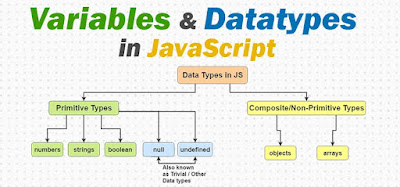A Journey Through Programming Fundamentals and Beyond 2024
🧱 Variables and Data Types:
Variables are like containers in memory 🧺 where data can be held, ready to be manipulated throughout a program.
Data types 📝 specify the kind of data that can be stored and manipulated within a program. Common data types include integers (whole numbers) 🕺, floats (decimal numbers) 🌟, strings (text) 📚, and booleans (true/false) ✔️.
🚦 Control Structures:
Control structures 🎮 are the traffic directors of your program's execution.
- **Conditional Statements (if, else):** These 🚥 allow the program to execute different code paths 🛤️ based on specific conditions.
- **Loops (for, while):** These ♻️ enable the repetition of a block of code multiple times, often with variations in each iteration.
🔧 Functions/Methods:
Functions 🛠️ are like magic spells 🪄 in coding. They are reusable blocks of code 🧩 designed to perform specific tasks. They take input data 📥, work their magic ✨, and return a result 📤. Functions make code modular, reusable, and easier to read.
📝 Syntax and Semantics:
- **Syntax** ✍️ defines the rules governing the correct structure of a programming language. It's like the grammar 📜 of the code.
- **Semantics** 🤖 provides meaning to syntactically correct strings of symbols within the language. It's the "what does this code actually do?" part.
🔥 Error Handling:
Error handling ⚠️ involves writing code that can handle unexpected events or errors during execution. It ensures that the program can manage errors gracefully and continue to operate or terminate safely.
📦 Data Structures:
Data structures 📊 are like virtual storage units 📦. They help in efficiently organizing and storing data in a computer so it can be accessed and modified effectively. Common data structures include arrays 🧮, lists 📋, and dictionaries 📖.
📚 Algorithms:
Algorithms are like recipes 📖 for your code. They are sets of instructions 📝 designed to perform specific tasks. Algorithms can be as simple as making a sandwich 🥪 or as complex as solving a Rubik's Cube 🧩.
🏭 Object-Oriented Programming (OOP):
OOP is a programming paradigm based on the concept of "objects" 🧸, which can contain both data (attributes 📂) and code (methods 📝). It's like creating your own little universes 🪐 within your code, with their own rules and behaviors.
🔍 Debugging:
Debugging 🔍 is the process of being a detective 🕵️♂️ in the world of code. It's all about identifying and removing errors 🐞 from computer hardware or software. Debugging helps ensure that the program runs smoothly.
📂 Version Control:
Version control systems 🔄 are like time machines ⏳ for your code. They record changes made to files 📂 over time, allowing you to revisit specific versions later. This is especially handy for managing changes in source code.









.png)




0 Comments